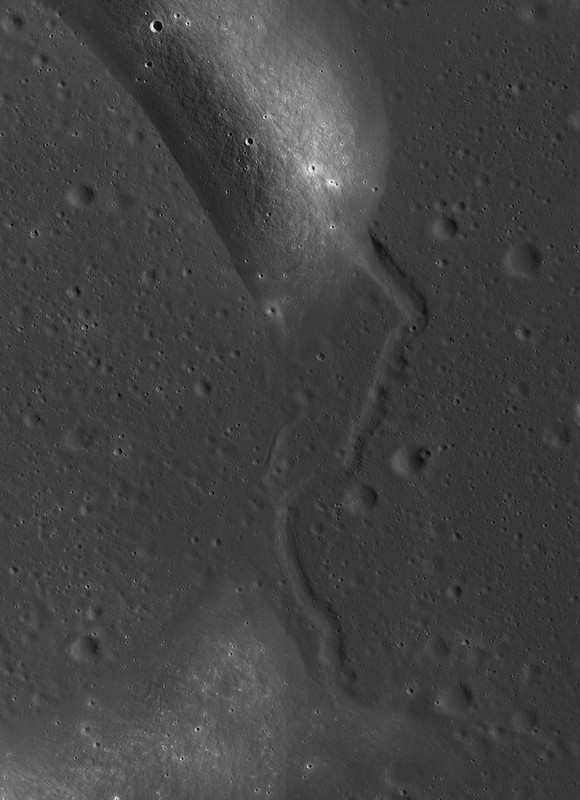 |
| A lunar rille comes to an abrupt termination at a crater rim (34.342°S, 145.430°E). LROC Narrow Angle Camera (NAC) frame M1122636898R, LRO orbit 17626, May 8, 2013; illumination from east-northeast, an approximate 1 km wide field of view at 0.74 meters resolution [NASA/GSFC/Arizona State University]. |
LROC News System
We invite you to take a close look at this sinuous rille in Jules Verne crater on the lunar farside.
Why do we see it approach this portion of an ancient, mare-flooded crater rim and suddenly terminate?
Any flowing river of molten rock (the process responsible for most sinuous rilles) would skirt the base of such a positive-relief structure once encountered ... unless the crater rim formed after the rille. But if the crater is flooded by mare basalts (see context image below) the crater must have formed before the rille, which established itself during mare emplacement.
 |
| Simple contextual seven kilometers wide field of view shows a wide distribution of debris aprons bordering nearly every contact zone in the vicinity of this ghost crater on the floor of Jules Verne. View a much larger rendition HERE. LROC NAC mosaic M192002047LR, orbit 13328, May 18, 2012; 66.47° angle of incidence, resolution 0.72 meters per pixel from 70.65 km [NASA/GSFC/Arizona State University]. |
 |
| LROC Wide Angle Camera (WAC) mosaic covering a 100 km wide field of view, including the western interior of Jules Verne [NASA/GSFC/Arizona State University]. |
This eroded material may have buried other portions of rille that might indeed have skirted the original rim, giving the visible portion an appearance of protruding out of the rim at a sharp angle. Can you find any additional clues that would help solve the puzzle?
Other examples of rilles are highlighted in the LROC Featured Image posts "Meanders in Posidonius," "The Old and the Young in Tsiolkovskiy," and "Rimae Prinz Region - Constellation Region of Interest."


No comments:
Post a Comment